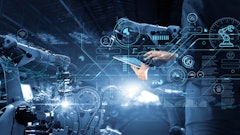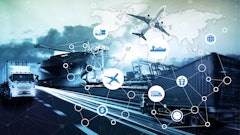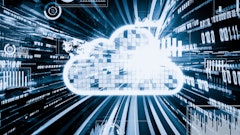By Brian Everett
At the NASSTRAC Conference and Logistics Expo held recently in Orlando, top-of-mind issues for many of the transportation and logistics executives in attendance included globalization's impact on transport issues as well as government initiatives focused on safety and security. In a nutshell, here's the word on the street.
Let's start with globalization and its significant impact on transportation. Prices continue to fluctuate for traded goods and services, while quality and choices increase with more and more stock-keeping units (SKUs). Importers benefit from foreign resources and labor, and exporters benefit from larger, more open markets — as long as the firms are world-class competitive. Shifts continue to happen in economic geography, both inside and outside of the United States. And such issues as the environment, safety and security remain at the forefront in the industry.
Against this backdrop, however, what is globalization's impact on security and transport? Increasing demand-driven, time-definite shipments need more reliability and visibility, as well as security of transit to their final destination. More distributed, point-to-point, direct-to-customer shipments (e.g., Asia direct-to-store) can add volume at smaller ports and on secondary traffic lanes, but security is a constraint. And executives see continued demand for more efficient flows, with more products per shipment to reduce re-handling and pre-blocking containers on ships in Asia for U.S. intermodal trains, as well as pressure to reduce empties and inventory costs. And overall, trade in lighter-weight, higher-value products is outpacing growth in bulk commodity categories, which means higher service transport for ocean containers, expedited truck and intermodal rail freight. These trends aren't all bad, but they are presenting logistics and transportation executives with some significant challenges.
Unfortunately, the primary challenge facing the domestic transport system remains the fact that trade growth continues to be faster than the growth of the U.S. domestic freight system capacity across seaports, airports, terminals, railroads, trucking, warehousing and labor. Among the potential solutions that I heard at the conference:
- International trade will be increasingly integrated with inland transport; less West Coast transloading; more "hub and spoke" (inland) distribution; more "bulk" trade distribution centers;
- Smaller and more frequent shipments favor truck versus rail; intermodal container vs. intermodal rail trailer;
- However, improved (double-stack) intermodal rail service captures more line-haul long-distance trucking;
- But sustained (regional) trucking growth swamps other domestic mode growth, and the truck remains the default solution.
Of course, the rail system continues to face significant challenges. The system offers inadequate capacity and service capabilities to handle any significant additional share of highway cargo. Railroads are using pricing to maximize highest-margin freight (e.g., intermodal squeezing out carload, international squeezing domestic intermodal), subject to regulatory constraints and political realities. In addition, freight rail capital investment remains constrained despite recent profitability because private capital requires a greater return than public expectations for (the same) rail network.
As the transport landscape changes, what could we see from the government? Some predictions, I hear, include new mileage-based or ton-mileage fees for highway use; more toll roads, including potentially, truck-only lanes; and, for all modes, ever tighter emissions limits, alternative fuel equipment mandates, new operating restrictions, new (e.g. carbon) taxes and more user fees. Not good news for the transportation industry. Additional predictions include further logistics workforce regulations in security and safety and higher productivity equipment, potentially including higher truck size and weight, perhaps with user fees. With all the "green talk," no doubt there will also be subsidies and tax benefits for environmental reasons alone.
Given all these challenges, supply chain executives can expect a need to forecast supply chain needs further out and to have more inventory in the pipeline at times. Technology and modeling will help provide information and optimize decisions. In addition, shippers will need further integration between supply chain partners through technology and standards for planning, management and security reasons. Lastly, ongoing revisions to shipment and delivery practices will be needed to comply with regulations and align with performance capabilities of workforce, carriers and transportation networks. That's the good news: There are solutions. It's up to the supply chain executive to figure out how to leverage them to ultimately benefit his or her company.
About the Author: Brian Everett is executive director of NASSTRAC, the National Shipper's Strategic Transportation Council, which provides education, advocacy, connections and solutions to transportation, logistics and supply chain management professionals who manage freight across all modes. More information at www.NASSTRAC.org.


























